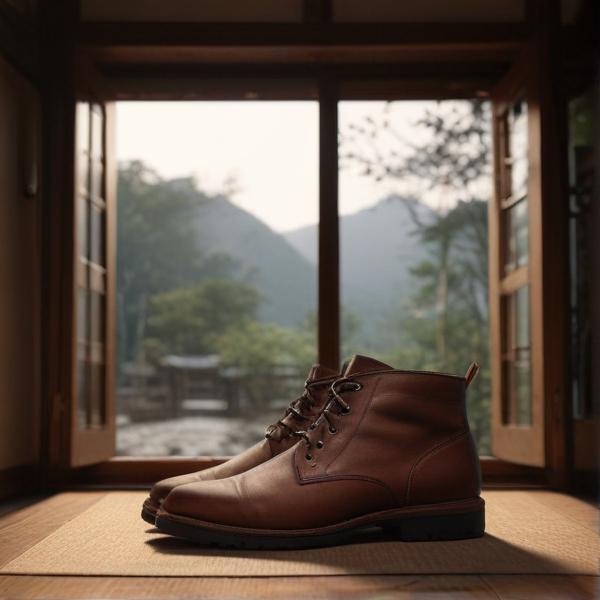基本信息 (Basic Information)
含义与用法 (Meanings & Usage)
中文核心释义 (Core Chinese Meaning): 鞋类的一种,多为高腰,保护脚踝及小腿,通常为皮革制成,称为“靴子”。
英文核心释义 (Core English Meaning): boots; a type of footwear, usually high-top, that covers the ankle and often the calf.
象形意义 / 为何这么写 (Pictographic Meaning / Writing Rationale)
文言文释义 (Classical Chinese Meaning)
文言文中“靴”的意义与现代意义相近,均指高筒鞋。Similar to modern meaning; refers to high boots in Classical Chinese texts.
深入学习 (In-depth Study)
字源故事 (Origin Story)
字形演变 (Character Evolution)
常用词语和例句 (Common Words & Examples)
雨靴 (rain boots)
下雨天她穿上了雨靴。
Eng: She put on her rain boots on a rainy day.
皮靴 (leather boots)
冬天他喜欢穿皮靴保暖。
Eng: He likes to wear leather boots in winter to keep warm.
相关成语 (Related Idioms)
相关成语信息待补充。Related idiom information pending.
多语言翻译 (核心释义) (Translations (Core Meaning))
- French: bottes
- German: Stiefel
- Spanish: botas
- Italian: stivali
- Portuguese: botas
- Russian: сапоги
- Arabic: جزمة طويلة
- Persian: چکمه
- Dutch: laarzen
- Polish: buty (zwykle wysokie), kozaki
- Vietnamese: ủng, bốt
- Ukrainian: чоботи
视频学习资源 (Video Learning Resources)
通过以下链接在热门视频网站搜索 "靴" 的更多讲解:
Search for more explanations of "靴" on popular video sites:
- 在 Bilibili.com 搜索 "靴 字源 说文解字" (Search on Bilibili)
- 在 YouTube.com 搜索 "靴 character origin etymology" (Search on YouTube)
网络参考 (Web References for "靴") ()
网络内容摘要 (Web Content Summary):
-
核心含义:“靴”(xuē)是指高筒鞋,特别是高过踝骨的长筒皮靴,最早是用兽皮制作,常见于北方游牧民族,主要用于保护双脚和便于骑马。 Core meaning: “靴” (xuē) refers to boots, especially tall leather boots reaching above the ankle. Originally made from animal hides, they were commonly used by northern nomadic people for foot protection and riding.
-
字形和起源:“靴”由“革”(表示“皮革”)和“化”(表示“变化”或“制作”)组成,意为将兽皮加工变成鞋子的器物。篆文和籀文都体现了这个结构。 Etymology: The character consists of “革” (leather) and the phonetic component “化” (to transform), meaning an item made by turning animal skin into footwear. This structure is preserved in ancient scripts.
-
常见用法及相关词汇:“靴”作为名词使用。例如,靴桶(靴筒)、靴袍(穿靴时穿的官服)、靴叶子(可塞入靴筒的票夹)。 Common usage & related words: “靴” is used as a noun. Relevant words include 靴桶 (the boot shaft), 靴袍 (official robe worn with boots), and 靴叶子 (a ticket holder tucked inside boots).
-
易混淆点:“靴”与“鞋”发音相近,但“靴”专指高筒、通常为皮制的鞋,而“鞋”是普通鞋的统称。 Common confusion: “靴” (boots) sounds similar to “鞋” (shoes) but specifically refers to tall, often leather, boots, while “鞋” refers to shoes in general.
汉字"靴"的起源、演变过程-汉字字源辞典
化 ,既是声旁也是形旁,表示改变、变成。 靴 ,籀文 (革,兽皮) (为,制作、变成),表示用兽皮制作。 篆文 (革,兽皮) (化,变成),表示由兽皮变成的用具。 造字本义:名词,北方游牧民族用兽皮或牛马皮制作的筒高至胫的皮鞋,柔软皮革和筒形高帮的设计,有利于骑马和对脚的保护 。
靴的解释|靴的意思|汉典"靴"字的基本解释 - 漢典
靴. 鞾 xuē 〈名〉 (1) (形声。 从革,化声。革,皮革。本义:高到踝骨以上的长筒鞋) 同本义 [boots]. 尝有人著靴骑驴,至兆门外。—— 《晋书》 (2) 又如:靴叶子(塞藏在靴筒内可折叠的票夹);靴桶(靴靿。 靴筒);靴衫(乘马时所穿的衣服);靴袍(穿靴时所服的官袍)
更多图片 (靴 More Images) ()
